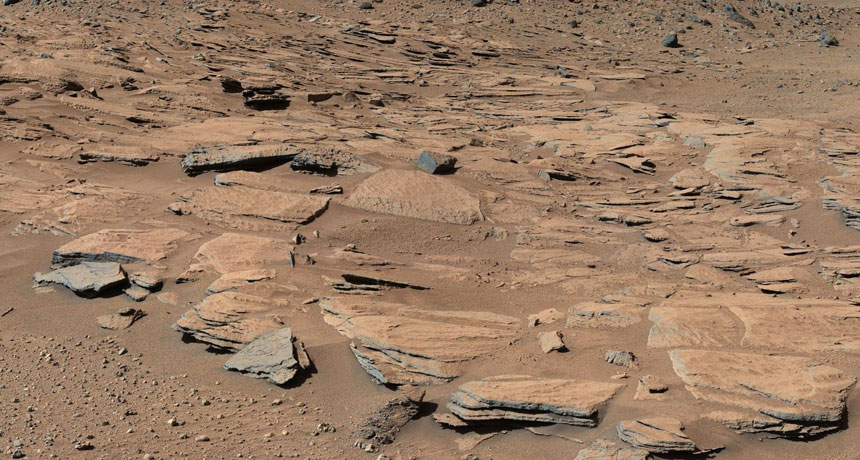Martian crater was once filled with liquid water
Ancient river deposits indicate lake lasted for millions of years

WATERY PAST Sandstone deposits laid down by ancient rivers on Mars, seen in this image from the Curiosity rover, indicate that Gale Crater was once a shallow lake.
JPL-Caltech/NASA, MSSS







